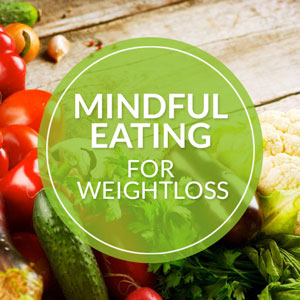Slow Eating, Slow Yoga, Slow Sex
The Benefits of Slowing Down in Yoga and Food
 I have been noticing the concept of “Slowing Down” all over the place. A student of mine asked specifically to focus on pace and flow during our last class because he wanted to learn how to move like a dancer. Slow food movement is gaining momentum. More folks are exploring the sexual aspects of slowing down with Mindful Sexuality and Orgasmic Meditation. As a foodie and someone who feels best when I listen to my body, I know that slowing down is necessary to engage all the senses and to be fully present. Slowing down when it comes to food is crucial if you want to want to learn how to listen and decipher your body’s cues.
I have been noticing the concept of “Slowing Down” all over the place. A student of mine asked specifically to focus on pace and flow during our last class because he wanted to learn how to move like a dancer. Slow food movement is gaining momentum. More folks are exploring the sexual aspects of slowing down with Mindful Sexuality and Orgasmic Meditation. As a foodie and someone who feels best when I listen to my body, I know that slowing down is necessary to engage all the senses and to be fully present. Slowing down when it comes to food is crucial if you want to want to learn how to listen and decipher your body’s cues.
Slow Food
Let’s take a closer look at the Slow Food concept: why is it good for us and most importantly how do you slow down?
It seems that taking time with anything you do has multiple benefits. You grow stronger and increase you body awareness with slow asana flow; you get to enjoy more by taking it slow during sex; and obviously there is nothing wrong with taking time to pick, cook and savor your meal. But Slow Food concept is much more sophisticated than that! Slow Food’s official website (www.slowfoodusa.org) states that this will bring you more enjoyment with food while saving the planet, increasing local biodiversity, helping farmers, and making you more healthy. They invite you to turn every meal into a cultural experience and a celebration of life.
It is not only about slowing down the eating process, it is about picking your food with care, cooking it with love, and setting up the table as if you had your dearest friends over.
You may be wondering why you should suddenly start cooking if you can order in or get take out on any corner…
Here are a few convincing reasons to try cooking at home:
– Preparing food is a great de-stressor for many people.
– You have a 100% control over what goes into your dish.
– Ayurveda and modern scientist agree that food can absorb the energy of the individuals who prepare, sell, distribute, harvest, and grow the food. An IBM research scientist, Marcel Vogel, demonstrated the effect of the energy of those in contact with the food. His experiments showed that food prepared with love not only tastes sweeter but actually changes the chemical structure of the food.
– It can be lots of fun. Invite your friends or family to help you cook and experiment with new dishes! Get your kids involved while they help you out and learn about healthy foods.
– Cooking doesn’t have to be difficult.Early Fall is perfect time to learn how to make simple and easy meals that don’t require a lot of time to prepare. Experiment with preparing nutritious colorful salads: greens, cucumbers, avocado, beans, a little bit of cooked grains, olive oil and lemon for dressing. Most vegetables can be eaten raw and fruits don’t require cooking. To start you off, here are easy salad recipes and 30 quick vegetarian meals from Whole Living and Eating Well.
Slow Eating
Now, the most essential principle of Slow Food – Slow Eating. It might seem like the easiest part but it is far from it, especially in a fast-paced New York culture. Eating on the go, at the computer, while walking and talking doesn’t let you focus on the meal and be completely aware of what goes into your body.
Here is why eating slowly is good for you:
– It helps your digestion. Digestion starts in your mouth and chewing food will significantly reduce the workload for your stomach.
– It will help you lose all the unhealthy weight. By eating slower, you will consume fewer calories. It takes about 20 minutes for our brains to register that we’re full. If we eat fast, we can continue eating past the point where we’re full. If we eat slowly, we have time to realize we’re full, and stop on time.
– It can reduce your stress level. Consciously slowing down and bring awareness into any process will help reduce stress. It can become your time for mindfulness meditation or exercise. Try to be completely present in you body while consuming food.
– You will enjoy food more and have fewer cravings. Often we crave something for days but as soon as we get, we gobble it down in a second without actually tasting the food. There is no feeling of satisfaction and the cravings soon return. Savoring each piece and mentally acknowledging foods taste will allow your brain to register a pleasant moment and will make you feel satisfied. Learning how to eat slowly may take some time but it is not difficult at all.
How to Master Slow Eating
– Make at least one meal a day a self-sufficient event. Whether you are with your friends, family, or alone, sit at the table, use a plate and utensils (even if you got a take-out deli sandwich), and turn off the TV or computer.
– Take time to absorb the colors, smell, and flavors of the food. Think of 3-5 adjectives to describe what’s on your plate either mentally or aloud.
– Chew each bite. Sometimes I notice people mindlessly putting spoonful after spoonful in their mouth and swallowing almost without chewing. The plate won’t disappear in 5 minutes after you start eating so slow down and enjoy your meal. A good strategy is to put the utensils down in between each bite. This way there is less of a temptation to reach for another spoonful while still chewing.
Your Turn:
Have you tried eating slowly? How does it make you feel?











